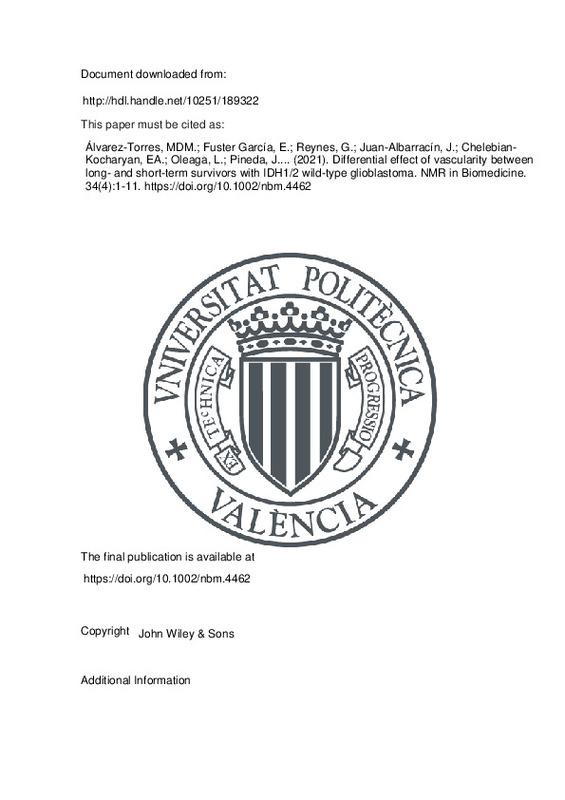JavaScript is disabled for your browser. Some features of this site may not work without it.
Buscar en RiuNet
Listar
Mi cuenta
Estadísticas
Ayuda RiuNet
Admin. UPV
Differential effect of vascularity between long- and short-term survivors with IDH1/2 wild-type glioblastoma
Mostrar el registro completo del ítem
Álvarez-Torres, MDM.; Fuster García, E.; Reynes, G.; Juan-Albarracín, J.; Chelebian-Kocharyan, EA.; Oleaga, L.; Pineda, J.... (2021). Differential effect of vascularity between long- and short-term survivors with IDH1/2 wild-type glioblastoma. NMR in Biomedicine. 34(4):1-11. https://doi.org/10.1002/nbm.4462
Por favor, use este identificador para citar o enlazar este ítem: http://hdl.handle.net/10251/189322
Ficheros en el ítem
Metadatos del ítem
| Título: | Differential effect of vascularity between long- and short-term survivors with IDH1/2 wild-type glioblastoma | |
| Autor: | Álvarez-Torres, María del Mar Reynes, Gaspar Juan-Albarracín, Javier Oleaga, Laura Pineda, Jose Auger, Cristina Rovira, Alex Emblem, Kyrre E. Filice, Silvano Molla-Olmos, Enrique Garcia-Gomez, Juan M | |
| Fecha difusión: |
|
|
| Resumen: |
[EN] Introduction: IDH1/2 wt glioblastoma (GB) represents the most lethal tumour of the central nervous system. Tumour vascularity is associated with overall survival (OS), and the clinical relevance of vascular markers, ...[+]
|
|
| Palabras clave: |
|
|
| Derechos de uso: | Reserva de todos los derechos | |
| Fuente: |
|
|
| DOI: |
|
|
| Editorial: |
|
|
| Versión del editor: | https://doi.org/10.1002/nbm.4462 | |
| Código del Proyecto: |
...[+] |
|
| Agradecimientos: |
DPI2016-80054-R (Programa Estatal de Promocion del Talento y su Empleabilidad en I +D+i).; European Union's Horizon 2020 research and innovation programme under the Marie Sklodowska-Curie grant agreement No 844646; ...[+]
|
|
| Tipo: |
|







![[Cerrado]](/themes/UPV/images/candado.png)


